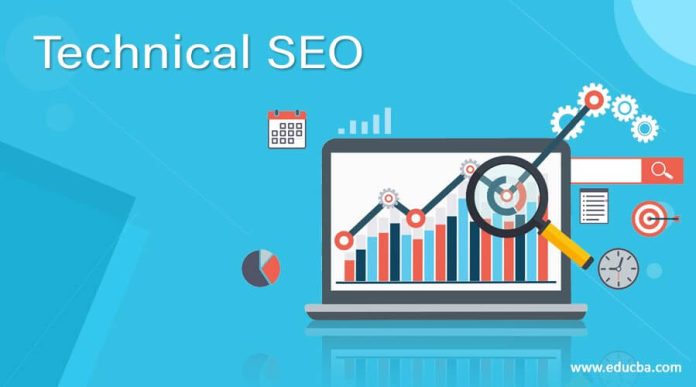SEO practices are crucial for boosting your website’s visibility, and technical SEO is a key component. In this blog post, we will examine into common mistakes made in technical SEO optimization and provide you with practical tips on how to avoid them. By following these guidelines, you can ensure that your website is set up for success in search engine rankings and organic traffic.
How to Identify Technical SEO Mistakes
Common Errors in Website Architecture
Technical SEO mistakes often start with website architecture errors. Common issues include complex URL structures, non-SEO friendly navigation, and poor internal linking practices that make it difficult for search engines to crawl and index the site efficiently. To avoid these mistakes, ensure your website has a clear and logical hierarchy, use descriptive URLs, and implement a user-friendly navigation system.
Identifying Issues with Crawling and Indexing
Clearly understanding how search engines are crawling and indexing your site is crucial for identifying technical SEO mistakes. Issues such as blocked resources, duplicate content, missing meta tags, and slow page loading speed can negatively impact your site’s search engine visibility. Regularly monitor your site’s indexation status, check for crawl errors in Google Search Console, and address any issues promptly to improve your site’s SEO performance.
Tips for Optimizing Website Speed and Performance
If your website is not loading quickly enough, it can have a negative impact on user experience and SEO rankings. Here are some tips to help you optimize your website speed and performance:
Factors Affecting Page Load Times
Some common factors that can affect your page load times include image sizes, server response times, the number of redirects, and the amount of CSS and JavaScript files on your website. By addressing these issues, you can help improve your site’s speed and performance.
- Optimize images to reduce file sizes
- Minimize the number of redirects on your website
- Compress CSS and JavaScript files
Knowing how these factors impact your site’s speed can help you make informed decisions when optimizing for performance.
How to Leverage Browser Caching and Compression
Load times can also be influenced by how your website interacts with the visitor’s browser. By implementing browser caching and compression techniques, you can help reduce load times and improve performance.
This can be achieved by setting expiration dates for how long certain files should be cached in a visitor’s browser, and by compressing files to reduce their size before they are sent to the browser. These techniques can help speed up load times and make your website more efficient.
How to Avoid Common Mobile-Friendliness Mistakes
Understanding Google’s Mobile-First Indexing
Even in today’s digital age, some websites still fail to prioritize mobile-friendliness. With Google’s mobile-first indexing, it’s crucial for websites to ensure their mobile version is optimized for users on various devices. Mobile-first indexing means that Google predominantly uses the mobile version of the content for indexing and ranking.
Tips for Ensuring Responsive Design and Usability
Googles’ algorithms favor websites that offer a seamless mobile experience. To avoid common mobile-friendliness mistakes, focus on responsive design and usability. Make sure your website layout adjusts to different screen sizes, elements are easily clickable, and content is legible without zooming in.
- Ensure fast loading times on mobile devices.
- Use large enough fonts for easy reading on small screens.
- Optimize images for mobile without compromising quality.
Mistakes to Avoid
The key to successful mobile optimization is to prioritize responsive design and usability. Neglecting these factors can lead to a poor user experience and lower search engine rankings. To prevent common mobile-friendliness mistakes, make sure your website is mobile responsive, loads quickly, and provides a seamless browsing experience across devices.
- Optimize your website’s navigation for mobile users.
- Ensure all buttons and links are easily tappable on touchscreens.
- Test your website on different mobile devices to identify any usability issues.
Factors to Consider for Secure and Trustworthy Websites
All websites should prioritize security and trustworthiness to protect both users and their own reputation. Understanding the key factors that contribute to a secure website is vital in today’s digital landscape. By focusing on these elements, businesses can ensure that their online presence is safe and reliable for visitors.
The Importance of HTTPS and SSL Certificates
HTTPS and SSL certificates are crucial components for creating a secure connection between a user’s browser and the website they are visiting. This encryption technology helps protect sensitive data, such as login credentials and payment information, from being intercepted by malicious third parties.
How to Implement Secure Protocols and Best Practices
Implementing secure protocols and best practices involves configuring your website to use HTTPS, ensuring that SSL certificates are up-to-date, and regularly monitoring for any security vulnerabilities. It is also important to enable secure cookie settings, use strong passwords, and conduct regular security audits to identify and address any potential risks.
Factors to consider for implementing secure protocols and best practices include keeping software and plugins updated, using firewalls and security plugins, implementing two-factor authentication, and educating employees on cyber security best practices. By following these guidelines, website owners can enhance the security of their online platforms and build trust with their audience.
Conclusion
Conclusively, Technical SEO optimization plays a crucial role in improving a website’s visibility and performance. By avoiding common mistakes such as neglecting mobile optimization, overlooking site speed, and forgetting to optimize for craw lability, businesses can ensure that their website ranks higher in search engine results. By paying attention to these key areas and implementing best practices, websites can enhance their user experience and ultimately drive more organic traffic.
